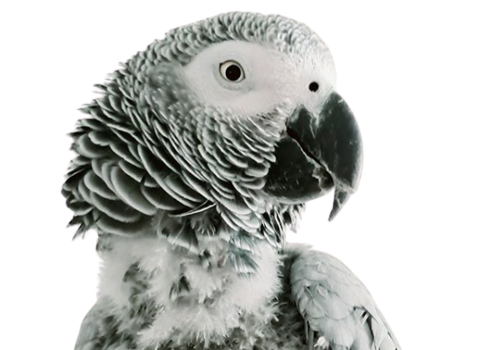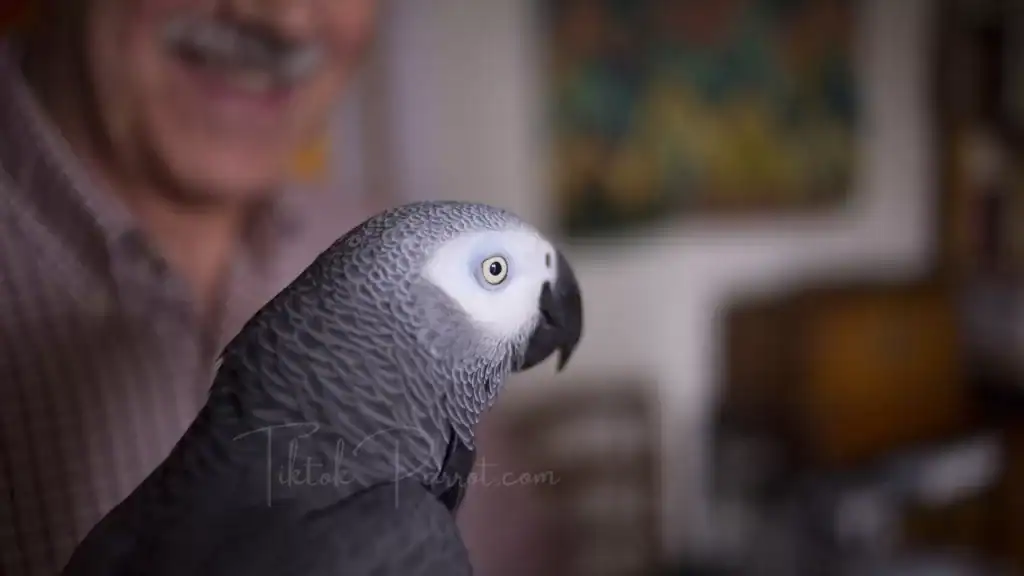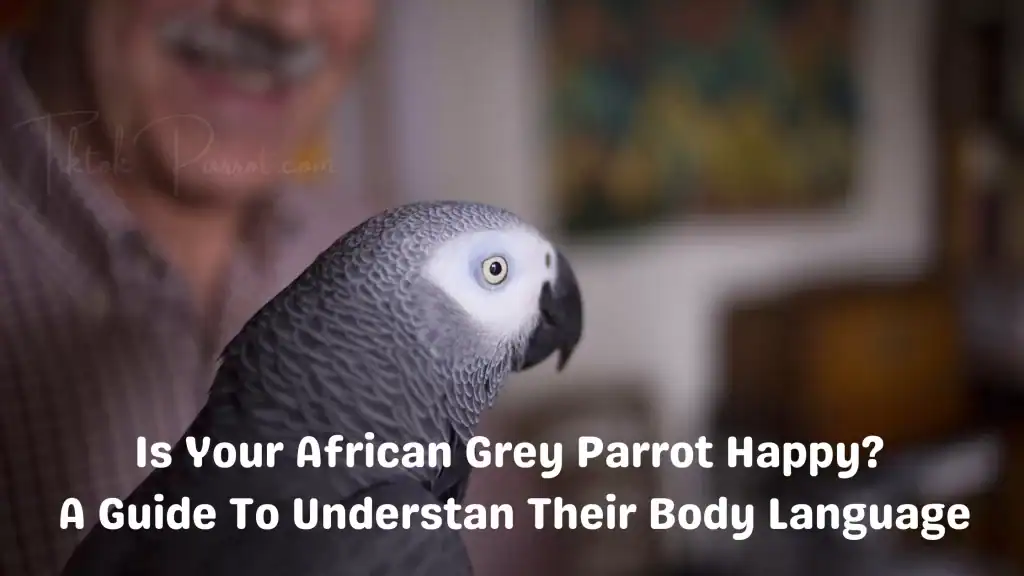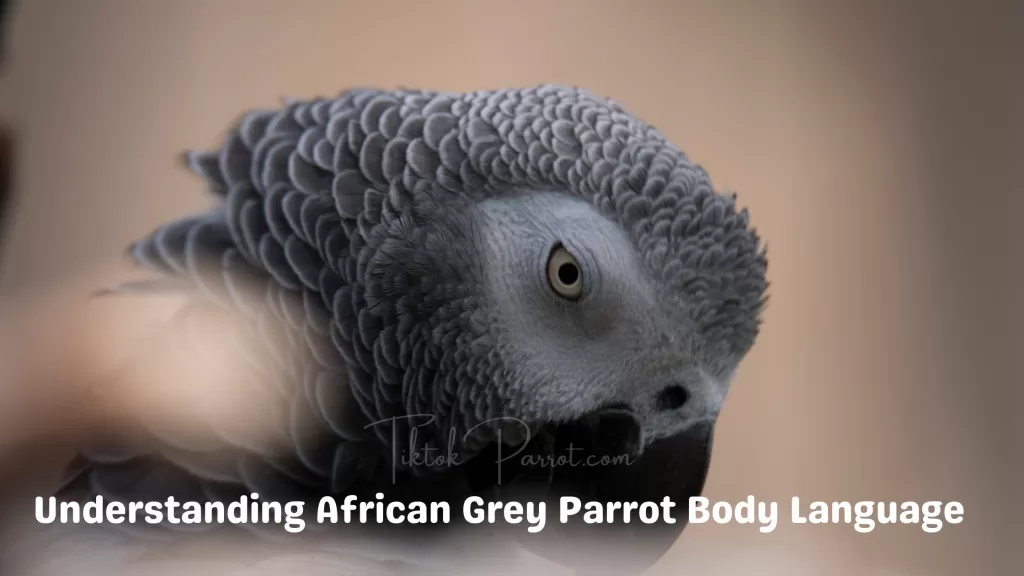African Grey Parrots are highly intelligent and social creatures known for their exceptional speaking abilities. However, despite their gift of gab, these feathered friends often struggle to communicate their feelings, leaving their owners unsure about their happiness.
But don’t worry! By paying attention to their body language, you can gain valuable insight into your parrot’s emotional state and ensure they are living their best life. In this comprehensive guide, we’ll delve into the tell-tale signs of a happy African Grey and help you understand what your parrot is trying to say.
“Discover the key to a happy African Grey Parrot – understand their body language! Learn about the tell-tale signs of contentment, from vocalizations to relaxed posture, and create a harmonious environment for your feathered friend.”
How do you know if your African grey is happy?
Is Your African Grey Parrot Singing a Happy Tune? Understanding the Signs of a Content Companion!
African Grey Parrots are known for their exceptional intelligence and ability to mimic human speech, but did you know they also have their own unique way of expressing happiness?
Understanding your African Grey’s body language is key to ensuring they are living their best life, and it’s easier than you think! In this guide, we’ll explore the tell-tale signs that your African Grey is a happy camper, so you can be confident that your feathered friend is feeling content and fulfilled.
Vocalizations: A happy African Grey will often vocalize with a range of sounds, from chirps and trills to coos and even full-blown songs. These vocalizations are a sure sign that your parrot is feeling content and relaxed, and they may also be an invitation for you to interact and play.
Preening: Preening is an instinctual behavior that birds use to maintain their feathers and keep them healthy. When your African Grey is preening, it’s a sign that they feel safe and secure in their environment.
Playful Behavior: Playful behavior, such as swinging on their toys or climbing on their cage, is a good indicator that your African Grey is happy. These activities keep their minds and bodies active, and they’ll often engage in these behaviors when they’re feeling content.
Relaxed Posture: A relaxed posture, such as sitting with their head tucked under a wing or perching with their feet flat on a surface, is a sign that your African Grey is feeling comfortable and content.
Alertness: An alert African Grey is a happy African Grey! These birds are naturally curious creatures, and when they’re feeling content, they’ll be more engaged and interested in their surroundings.
In conclusion, understanding your African Grey’s body language is crucial in ensuring they are living their best life. Whether they’re preening, vocalizing, or engaging in playful behavior, these signs are all indicators that your feathered friend is feeling happy and content. So, sit back, watch, and enjoy the music of a happy African Grey. Now let’s talk about the body language of these fascinating birds.
Understanding African Grey Parrot Body Language
African Grey Parrots are intelligent, social creatures that are capable of exhibiting a wide range of emotions and moods through their body language. Understanding the subtle cues and gestures they make can greatly improve your relationship with your pet bird. In this article, we will discuss the most common African Grey body language signals and how to interpret them.
Erect Posture
When an African Grey stands tall and erect, it is often a sign of confidence and happiness. The bird may be ready to play or engage in social activities with you. This body language is also seen when the bird is surveying its surroundings and feeling secure in its environment.
Head Bobbing
Head bobbing is a common African Grey body language signal that can have several interpretations. If the bird is bobbing its head rapidly, it may be feeling excited or nervous. A slow, deliberate head bob may indicate that the bird is in a relaxed and content state of mind.
Puffed Up Feathers
African Grey Parrots will puff up their feathers to appear larger and more intimidating when they feel threatened. This behavior is often seen when the bird is trying to establish dominance over another bird or person. If your pet bird puffs up its feathers, it is important to give it space and avoid interacting with it until it settles down.
Beak Open or Closed
The position of an African Grey’s beak can also provide important clues about its mood and emotions. A relaxed bird will typically have its beak slightly open, while a frightened or nervous bird will keep its beak closed tight. A beak that is fully open and wide is often a sign of excitement and playfulness.
Tilting Head
African Grey Parrots will often tilt their heads when they are trying to better understand their surroundings or listen to a sound. This body language signal is often accompanied by alert and curious behavior, and is a good indication that the bird is engaged and paying attention.
Eye Pinning
Eye pinning is a rapid, back-and-forth movement of the bird’s pupils, and is often a sign of fear or aggression. If your African Grey’s eyes are pinning, it is important to give it space and avoid interacting with it until it calms down.
Flapping Wings
Flapping wings is a common African Grey body language signal that can have several interpretations. If the bird is flapping its wings rapidly, it may be trying to take flight or escape from a perceived threat. If the bird is flapping its wings slowly and deliberately, it may be trying to cool down or stretch its muscles.
My Closing Thoughts
In conclusion, your African Grey Parrot is a unique and special companion who deserves the best life possible. By paying attention to their body language, you can gain valuable insight into their emotional state and ensure they are happy and fulfilled.
Remember, a happy African Grey is a content African Grey, and when you understand their body language, you can build a stronger, more fulfilling relationship with your feathered friend.
So go ahead, start observing your African Grey’s behavior, and create a harmonious and loving environment for your winged companion.
If you found this blog helpful, It would be great if you could share it with your family and friends who might find it useful as well.
You might like to read The Secret Life of African Grey Parrots: What You Need to Know Before Owning One and Frequently Asked Questions About African Grey Parrots!
For more useful content about African Grey parrots, you can subscribe my site with your email to get notification upon publishing a new blog, the subscribe box you can see on the right side of this page. Also if you get an alert on your web browser while browsing my site, allow it and that will also give you an alert whenever I publish a new blog.
Stay safe and much love !






